By Jennifer, Joshua’s mom
Joshua was born on September 15, 2008, at the UCLA Santa Monica Medical Center. He was welcomed by an amazing delivery doctor. She was slightly caught off guard when she noticed his scalp was missing skin and actively bleeding as he made his entrance into the world.
The skin erosion spanned his scalp, face, back, buttocks, thighs, and about half of his abdomen and chest. He had a very wide cleft lip and bilateral cleft palate. He weighed 7 lbs., 10 oz. and measured 21.5 inches in length.
He had a very soft dry cry as they began to wipe him down and swiftly rush him off to the neonatal intensive care unit (NICU). His Apgar scores were perfect, and he arrived on his due date.
Treating His Fragile Skin

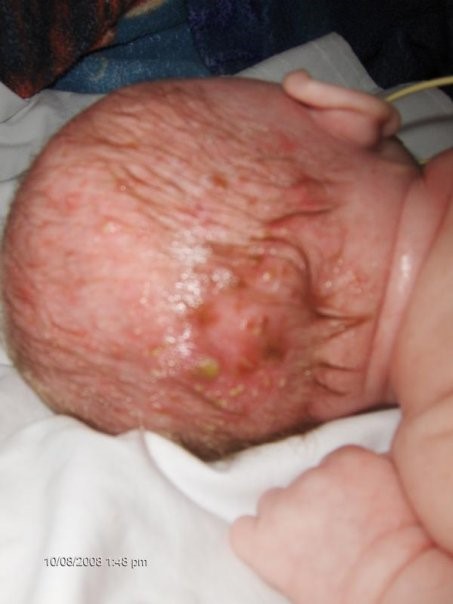
The nurses did an amazing job of finding a healthy balance between just enough moisturizer and too much. By two weeks old, Joshua had contracted MRSA, a bacteria that causes staph infection, and we started what felt like a battle we thought might never end.
Dermatologists and infectious disease doctors went round and round about what they thought might work best. After several months, we discovered that alternating between diluted bleach baths and diluted vinegar baths worked well to keep the pH balanced. This also kept fungal and bacterial infections at bay. Unfortunately, due to the nature of the skin erosions, infections would often reoccur.
For the first 17 days of his life, pediatricians assumed that Joshua was diagnosed with epidermolysis bullosa. That is a condition that would make his skin as delicate as a butterfly’s wings. It was that night when we had a new resident on rotation in the NICU. She said, “I do not believe this diagnosis is correct. I think your son might have a different condition. There is only like one paragraph about it in my text book.”
She told me that she would take a photo and send it to me when she arrived back home. She sent me the paragraph about the ectodermal dysplasias. So, that is when I hopped on the world wide web and Googled ectodermal dysplasias.
What I found was the National Foundation for Ectodermal Dysplasias (NFED). There were photos of children who looked just like Joshua and I knew we would be fine. We found his accurate diagnosis of ankyloblepharon-ectodermal defects-cleft lip and/or palate (AEC) syndrome and we found an extended family who would become our strongest supporters through the years.
– Jennifer
Repairing His Clefts


At 8 months old, Joshua had his first of many surgeries to repair the lip and nose portion of his cleft palate.
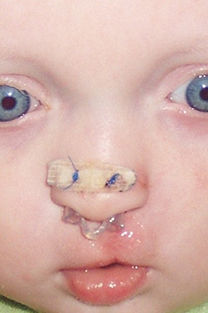

By two weeks post-op, his surgery site and skin had healed so well that doctors were able to remove his nasal shaper and he was trending in a positive direction.
Battling Scalp Infections
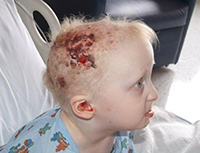
By the age of 2, Joshua’s hair was gradually filling in. It was coarse and sparse and would often come out in patches due to alopecia. Doctors discovered the hard way just how delicate his skin was when they allowed the elastic cord from his oxygen mask to roll up along his scalp as they woke him from surgery. It removed both the skin and hair in a large patch. This left him susceptible to more infections.

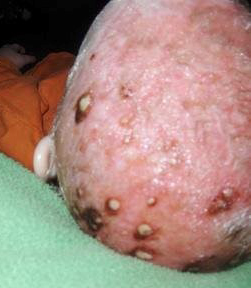
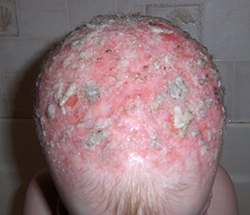
Again, it was a long battle fighting off both pseudomonas and MRSA. When we bathed Joshua, his skin became very soft, and the scabs would slide off. It was almost as if we were doing a manual debridement but it was not intentional.
We would have to limit water play and be careful using the shower because the water pressure was too forceful for his delicate skin. We went round and round with topical ointments and creams, IV antibiotics, and red light therapy. You name it, we likely tried it.
There were many times that the skin infections would get so bad that they would spread throughout Joshua’s blood stream and he would experience sepsis. It was at these times that they would keep Joshua for 14 to 21 days in the hospital to ensure the infections were gone. They would treat Joshua with round the clock IV antibiotics called Ampicillin, Gentamicin, and Vancomycin. Infectious disease doctors referred to that as a triple threat.
Keeping Cool at School

By the age of 4½, Joshua was excelling with education and was allowed to start kindergarten. We established an individualized education program (IEP) for speech therapy and other medically impaired issues. This was so the school would accommodate air conditioning and keep his classroom at 70 degrees Fahrenheit year-round.
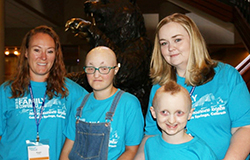
At age 5, we discovered that Joshua also experienced cold urticaria (an allergy to cold) and he was no longer a candidate for using a cooling vest. This meant we would simply wet his shirt or use a mister bottle to dampen his skin in the summer months or when he wanted to play soccer with his peers.
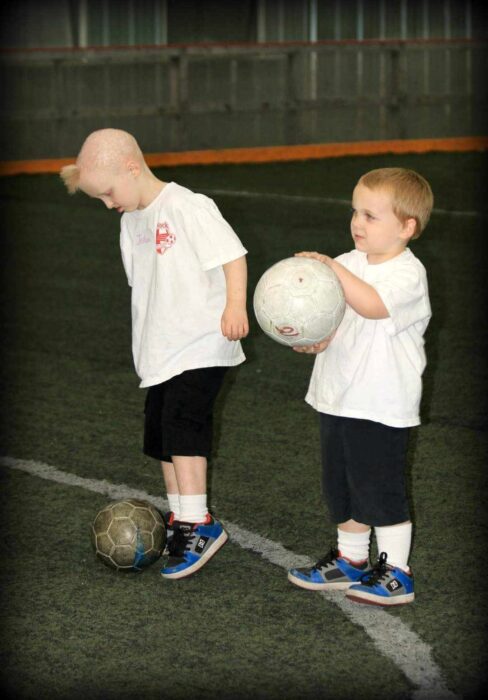
We never held Joshua back or treated him differently based on his diagnosis. We lived with the mindset that his diagnosis would never be a destination. It was a starting point, so we knew how best to accommodate his needs and help him acclimate to life on his terms.
By age 9, Joshua’s skin was primarily wound free and he was thriving.
What causes the skin to be fragile in AEC syndrome? We’re funding research to find answers. Click here to learn more.
Ongoing Eye and Skin Care

Joshua continues to apply daily moisturizers to his skin and scalp after his morning shower. His eyes, however, continue to develop a crust on the lashes nightly that requires a warm compress and washing with Johnson and Johnson’s baby shampoo to ensure they are clean every morning.
We had discussed dilating the tear duct and drilling out the nasal lacrimal duct allowing the tears to properly drain. After much discussion with the older generation of NFED family members who experience AEC syndrome as well as discussions with Joshua’s doctors, the consensus was that leaving everything as is would be the best in the long run. The surgical intervention would likely lead to chronic dry eye, and we would rather have too much moisture than not enough.
Changes at Puberty

As puberty started, we noticed some changes in Joshua’s skin and hair. He was starting to sweat in very small amounts but only after he overheated. The hair on the top of his scalp had started thinning substantially. Eventually, he developed facial hair and all the traditional coming-of-age changes were in full swing.
Joshua is now 15 and continues to enjoy hiking in the forests and near the waterfalls in the middle of summer in Oregon. He attended the county fair on the hottest day of the year when it reached 106 degrees Fahrenheit and was still able to enjoy himself, thanks to his use of a frogg toggs cooling towel and a wide-brimmed hat.


Joshua has also been able to enjoy attending Camp Wonder in Rutledge, GA. in the middle of summer despite his heat intolerance. He says Camp Wonder runs a close second to attending Kays’ Kids Camp at the NFED Family Conference. Both are positive self-esteem-building events for young students to attend.
Life in the Pool
As a freshman in high school, Joshua was encouraged to join the swim team. He found his niche! He has enjoyed being a member of the team the last two years and plans on swimming through all four years and possibly beyond.
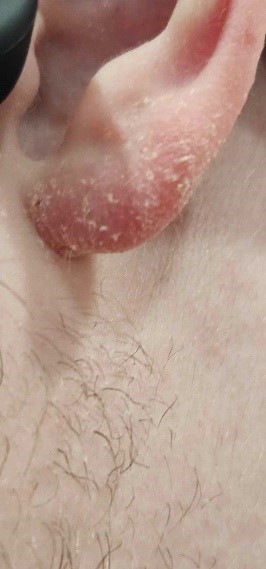

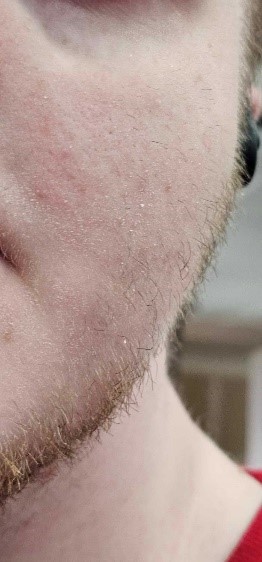
He is no longer impacted by the water making his skin too soft or by the force of the water as he dives off the block to enter the pool. He does have some struggles with dry skin from the chlorine. He showers immediately after practice and applies CereVe, Cetaphil, or Aquaphor to the problem areas and just keeps living his best life.

Joshua shared, “Despite my diagnosis, I enjoy life. I love being a part of my high school swim team, being adventurous, making new friends and spending time with a wide variety of people whom I have met over the years. I love church and all the opportunities that are still waiting for me to discover in life. When people ask about my AEC syndrome diagnosis, I am an open book. I enjoy educating others and helping them to see that I am a typical 15-year-old.”
Despite having had 51 surgeries and another one right around the corner, life really is what I make it. I get to choose to fill my heart with gratitude or grief. I hope it’s obvious which one I choose. I might have a diagnosis of ectodermal dysplasia but it will NEVER have me.
– Joshua
– Jennifer is a guest blogger for the NFED. She lives in Oregon, with her husband, Justin, and their sons, Joshua and Jaxon.
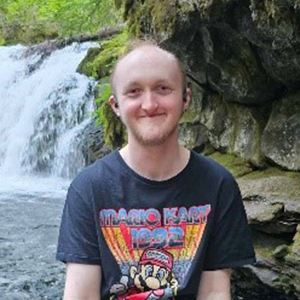
Thanks for sharing your story! You are a wonderful and brave young man who is thriving despite many challenges. My son has AEC and I hope he develops the positive outlook you have and learns to embrace his uniqueness. My son is 2 now so we have a long ways to go yet but he’s a tough little guy!
Lindsey